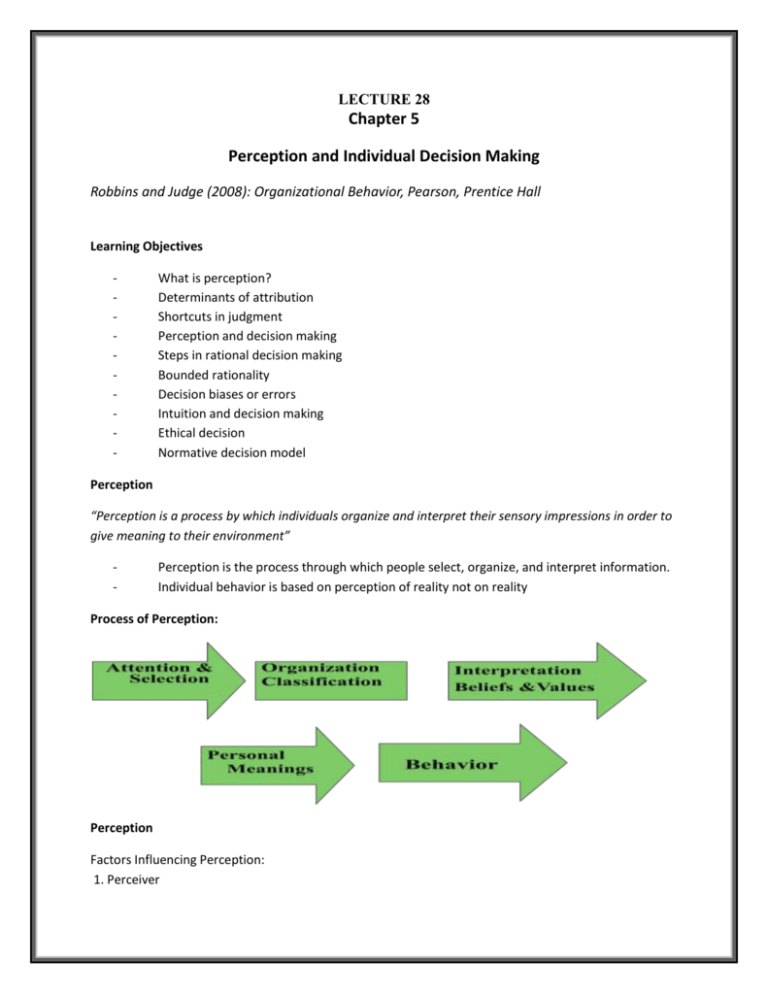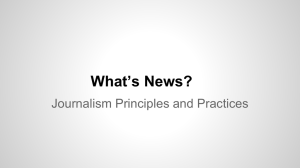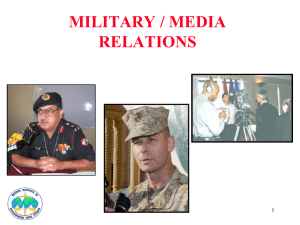
LECTURE 28
Chapter 5
Perception and Individual Decision Making
Robbins and Judge (2008): Organizational Behavior, Pearson, Prentice Hall
Learning Objectives
-
What is perception?
Determinants of attribution
Shortcuts in judgment
Perception and decision making
Steps in rational decision making
Bounded rationality
Decision biases or errors
Intuition and decision making
Ethical decision
Normative decision model
Perception
“Perception is a process by which individuals organize and interpret their sensory impressions in order to
give meaning to their environment”
-
Perception is the process through which people select, organize, and interpret information.
Individual behavior is based on perception of reality not on reality
Process of Perception:
Perception
Factors Influencing Perception:
1. Perceiver
2. The Perceived
3. Situation
Attribution Theory
Attribution process is a perceptual process whereby we interpret the causes of behavior in terms of the
person (internal attributions) or the situation (external attributions).
Two Types of Causes:
1) Internal (internally caused behaviors are believed to be under control)
2) External (behaviors resulting from outside causes or out of control)
Absence
Internal: Sleeping, late night party: External: Road accident
Factors of the Attribution Theory
1) Distinctiveness (whether person display different behaviors based on situation
2) Consensus (if everyone in given situation behaves in similar way)
3) Consistency (observer look for consistency in action)
EXAMPLE: Arriving late in meeting
Fundamental Attribution Error
Fundamental Attribution Error
When judge behaviors of others we often underestimate the influence of external factors
and overestimate influence of personal of internal factors
EXAMPLE: Poor performance of salesperson is believed to be due to laziness and
incompetence
Individuals also tend to attribute success to internal factor such as hard work, intelligence
and effort Individuals tend to attribute failure to external factors.
Self Serving Bias
•
A perceptual error whereby people tend to attribute their own success to internal factors and
their failures to external factors
EXAMPLE: Iraq War
Self-Fulfilling Prophecy
Shortcuts in Judging Others
•
•
•
•
Selective Perception
The tendency to focus on those attributes of people and situations that fit our
frame of reference.
o Example: Notice Car like you
Why we use selective perception?
We can not analyze or assimilate all information
We select information based on our interests, experience, attitude and background
•
Halo Effect
•
The tendency to overrate a person based on a single trait.
Link between Perception and Individual Decision Making
•
•
In organization individuals make decisions (choice between two or more alternatives)
Decision making often occur in response to problem
Decision require interpretation and evaluation of information and alternatives
solutions/course of actions
Quality of decision influenced by their perception
Problem definition varies from person to person
EXAMPLE: Quarterly Sales data
Rational Decision Making
The Rational Model
1)Define problem
2) Identify the decision criteria
3) Allocate weight to the criteria
4) Develop the alternatives
5) Evaluate the alternatives
6) Select the best alternative
Assumptions
1) Problem clarity
2) Known options
4) Constant preferences
6) Maximum payoff
Decision Making
Individual Differences
I) Personality
ii) Gender
2) Organizational Constraints
I) Performance evaluation
ii) Reward system
iii) Formal regulations
3) clear preferences
5) no time or cost constraints
iv) System imposed time constraints
v) Historical precedents
3) Cultural Differences
Creativity in Decision Making
Traits of Creativity:
Openness to experience, intelligence, independence, self confidence, risk taking, internal locus of
control, perseverance in frustration and tolerance for ambiguity
1. Expertise (knowledge, skills, and experience)
2. Creative thinking skills (analogies, apply idea from one context to other
3. Intrinsic Task Motivation (work with interest and joy, love their work). Other important thing is
presence of creativity driven culture.
The Normative Decision Model Decision Styles
Focus on matching leadership decision making style and situation
-
Styles are assumed to be learnable
Decision style depends on
Quality requirement of decision
Likelihood of commitment from employees
The Normative Decision Model Decision Styles:
1 Decide
- Leader makes decision with little or no subordinate input
2 Consult Individually
-Input from subordinates but leader makes decision
3 Consult Group
- Consensus building
- Leader shares decision making with group
5 Facilitate: Helps define problems
- Leader seeking participation and concurrence without pushing own ideas
6 Delegate
-
Leader gives total decision making authority to employees
Managerial Implication
Individuals behave based on their perception of environment and situation
- Absenteeism, job turn over, and job satisfaction behaviors are influenced by perception of individuals
- Individuals satisfaction and dissatisfaction level about work conditions, job, policies and structures are
based on perception
- Reducing Errors or Biases
1) Focus on goal 2) Analyze information that disconfirms your beliefs 3) Don't try to create meaning
out/from random events 4) Increase your options 5) Ask from yourself: Are you committing biases
- Enhance your decision quality by
- Analyzing the situation
- Adjust your style based on situation and culture – Be aware of biases Use creativity (out of the box thinking) – Use intuition with rationality
Source: Robbins and Judge (2008): Organizational Behavior, Pearson, Prentice Hall









